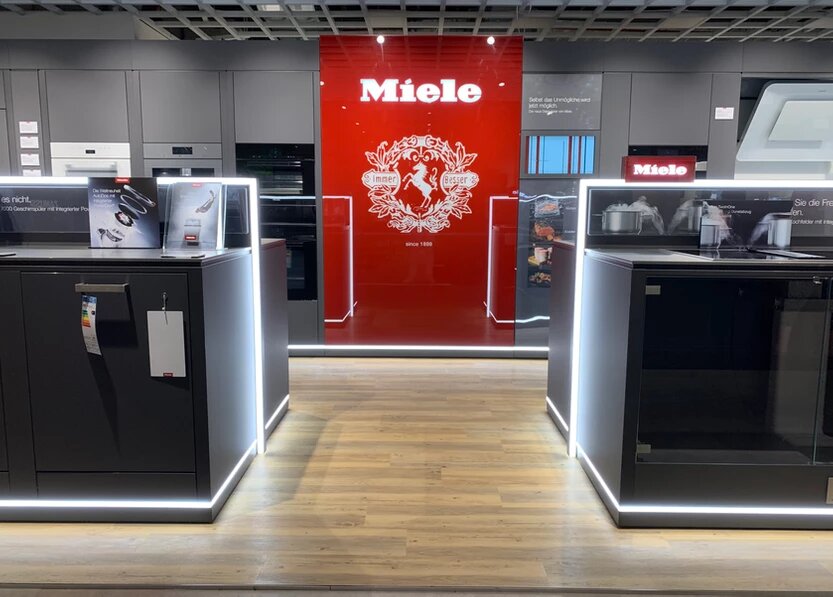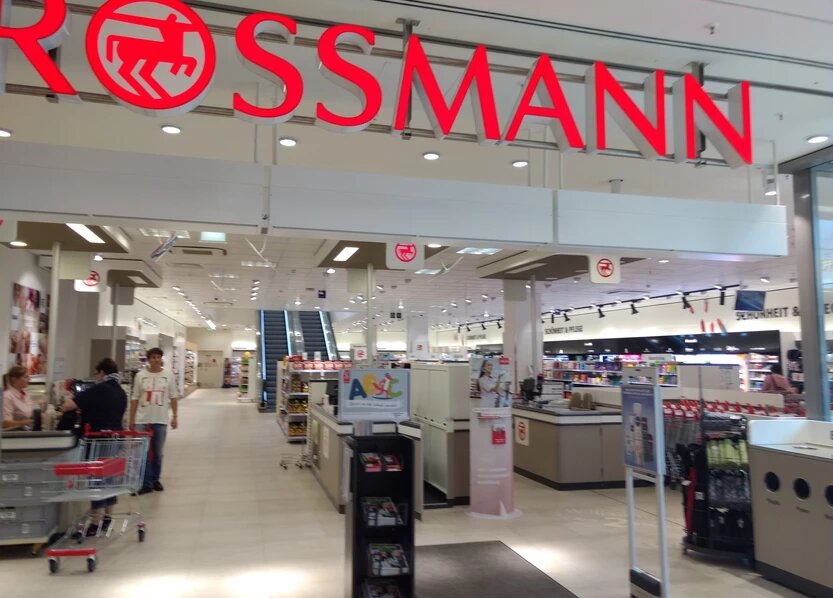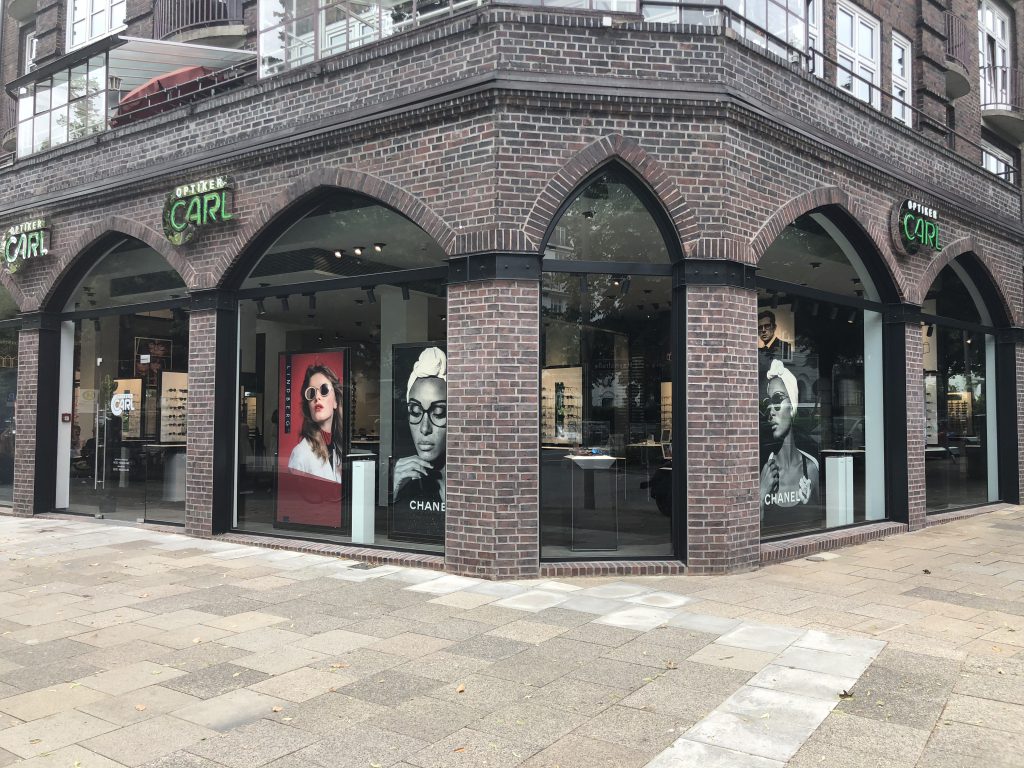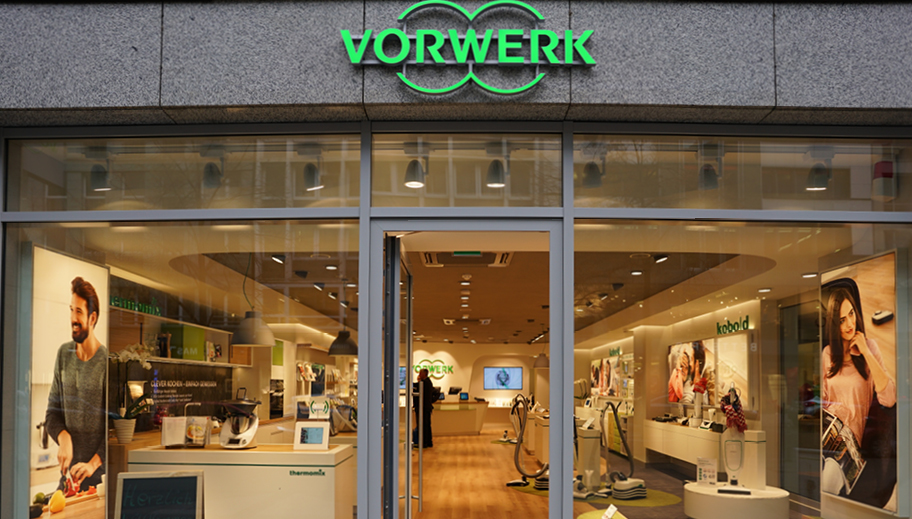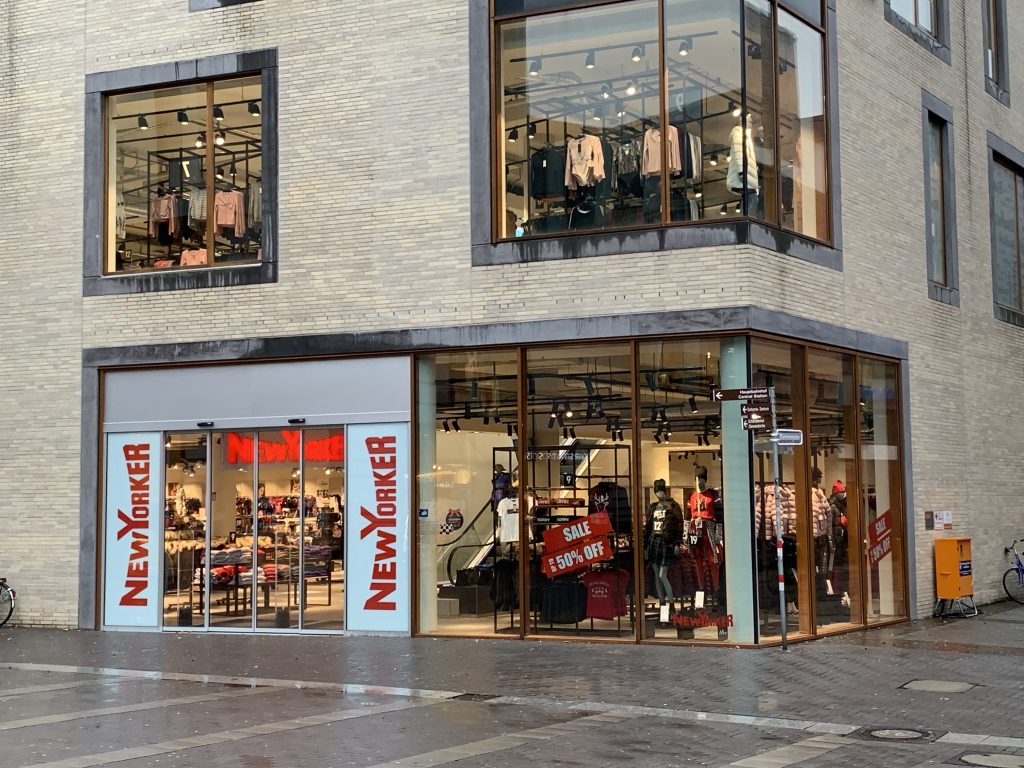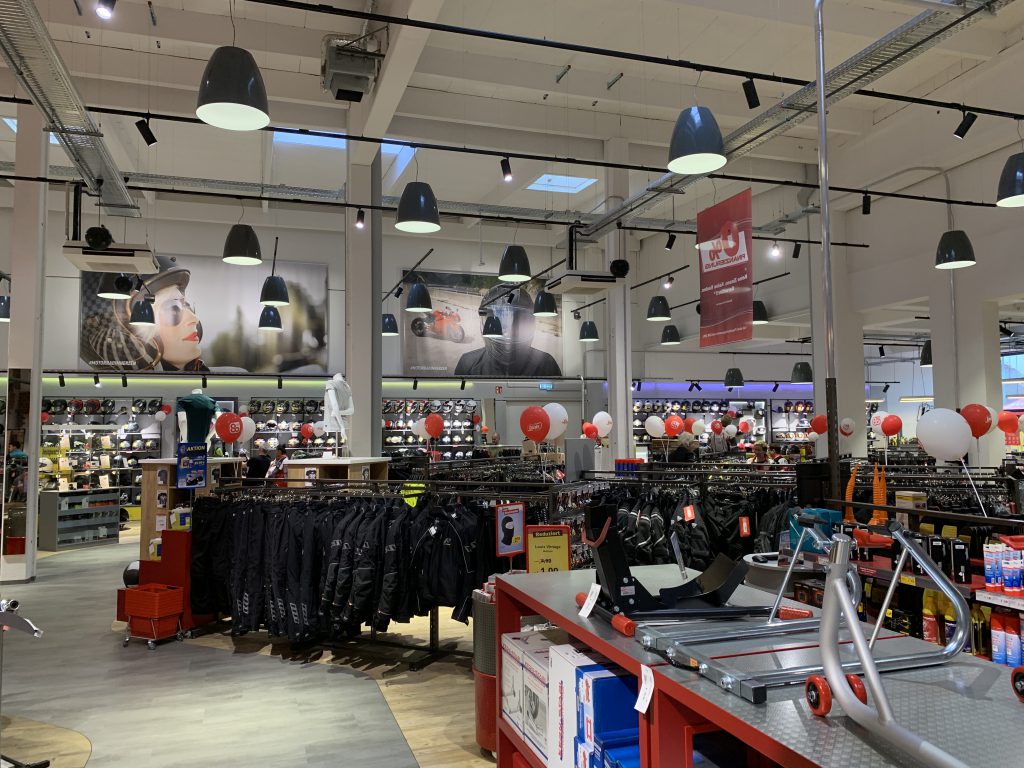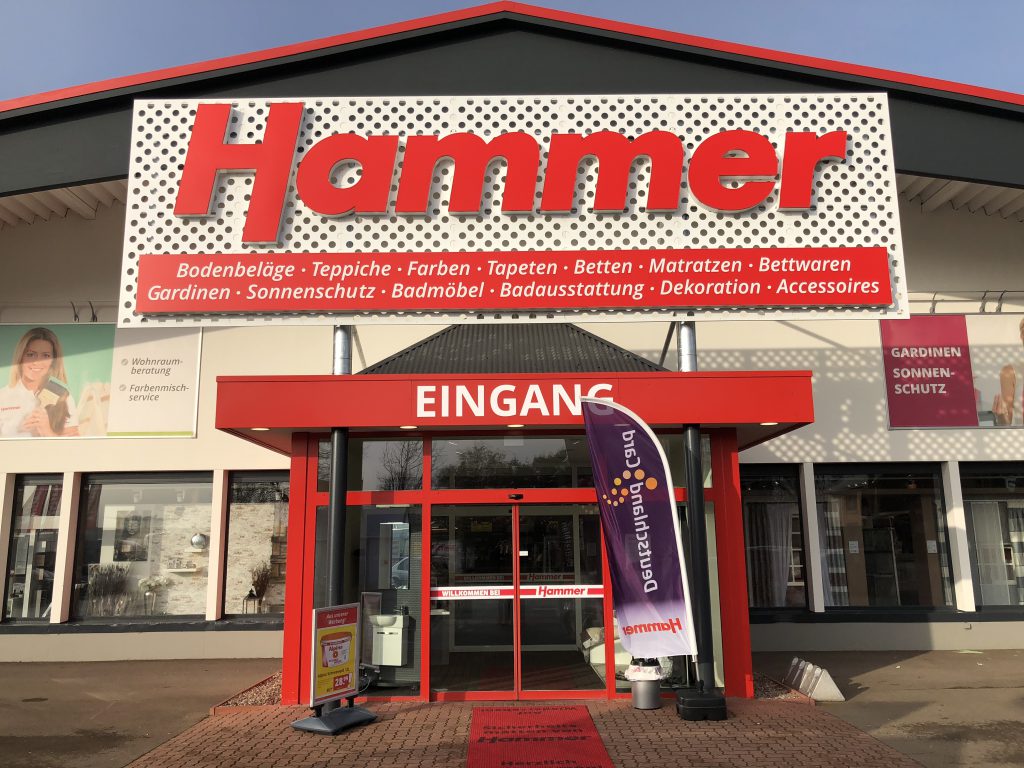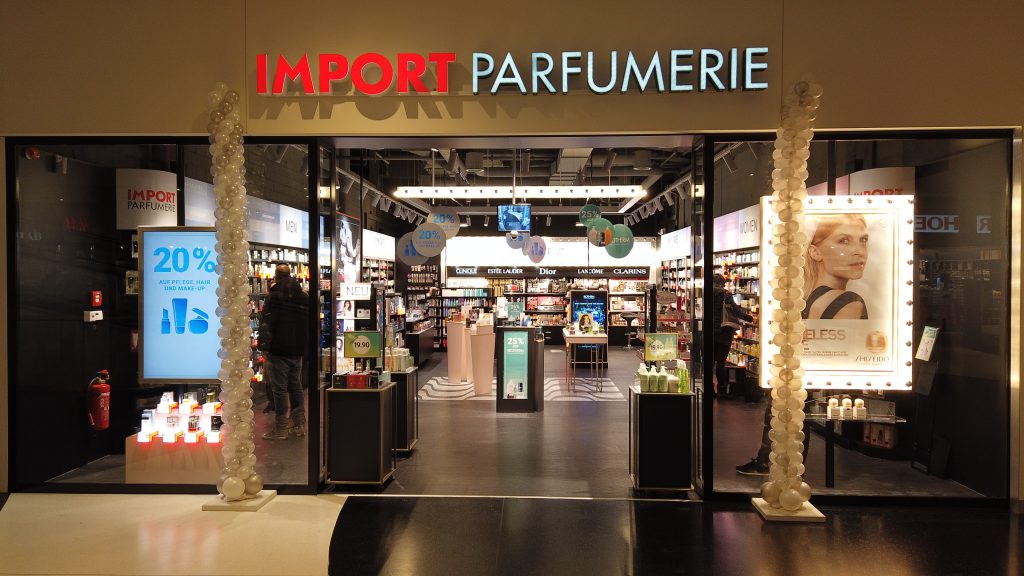As an expert in shop lighting, Max Franke knows the high demands placed on modern, sales-promoting product presentations. Every industry has its own requirements for light quality, intensity and color rendering. What they all have in common is that the goods are presented authentically and the customer feels comfortable in the shop.
Max Franke develops an individual and optimal solution for each customer according to target group, corporate design and shop architecture.
Shop window lighting
- The play with light and shadow makes a shop window appear alive.
- Variable light scenes in shop windows have been proven to attract attention and increase the number of customers.
- Because of their flexibility, power rail systems with spotlights have proven themselves in shop windows.
- The light should hit the presentation from the front in order to optimally illuminate the product.
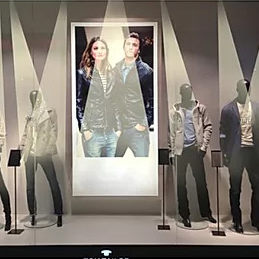
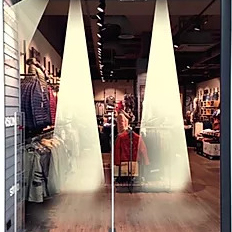
Lighting entrance area
- The entrance area, like the shop windows and the facade, is one of the hallmarks of a business and is therefore extremely important.
- At this point at the latest, it is decided whether a store will be entered at all.
- The lighting of the back walls in the store is also important for the decision to take action – the lighting of these vertical surfaces creates a suction effect in the store when products or special features are effectively staged with light.
Lighting wall shelves
- The wall shelves are the decisive factor for the long-distance effect and spatial effect.
- The customer should perceive interesting products right from the entrance. Highlights should therefore be particularly emphasized with light.
- A light-dark play is also important for the wall area in order to achieve a certain light dramaturgy.
- Depending on the ceiling height, the distance between the spotlights and the goods carrier is adjusted.
- For higher ceilings, a narrower reflector angle is selected in order to achieve the same light image on the goods
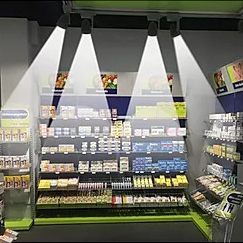
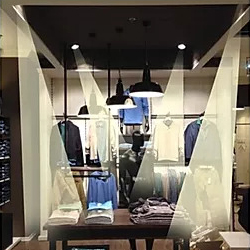
Lighting interior
- With accent lighting, the focus is on the product carriers. The floor is not illuminated.
- Torsos, puppets and action areas are highlighted with additional spotlights
- Not every product carrier can be illuminated from all sides. Lighting based on visual axes on the way into the store is important.
- Luminaires that are swiveled too far should be avoided as the glare will be too great.
- Seating should have a diffuse light – nobody likes to sit in the spotlight.
Changing room lighting
- The majority of customers make their purchase decision in the changing room, so it is important that the customer feels comfortable when trying on them
- This is the case when the light comes in soft and diffuse from the front – the light should play around the body. Backlit mirrors are suitable for this.
- Hard light from above is not effective, as strong shadows highlight unpleasant body contours.
- Various light scenarios that the customer can set themselves allow the customer to imagine themselves in different scenarios. B. on the beach, in the office or at a party.
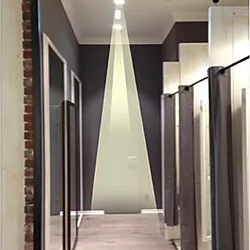
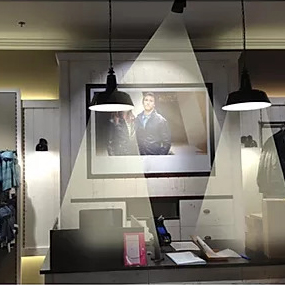
Illumination of the checkout area
- Decorative lights attract attention and make it easier for customers to find the checkout area.
- It is important to choose lights that do justice to the cash desk workplace, so that the employees have optimal lighting of the products and, on the other hand, the best possible comfort at the workplace

